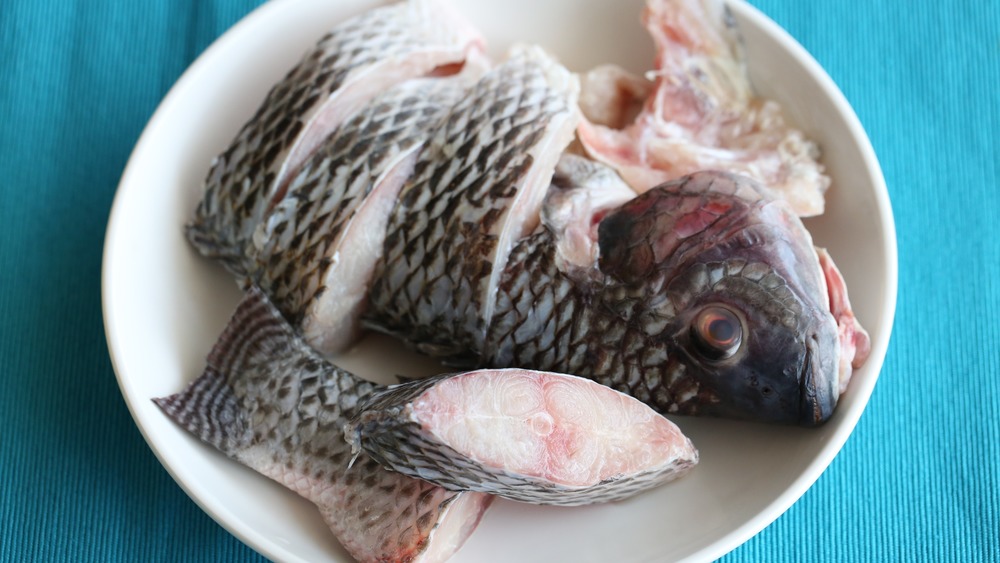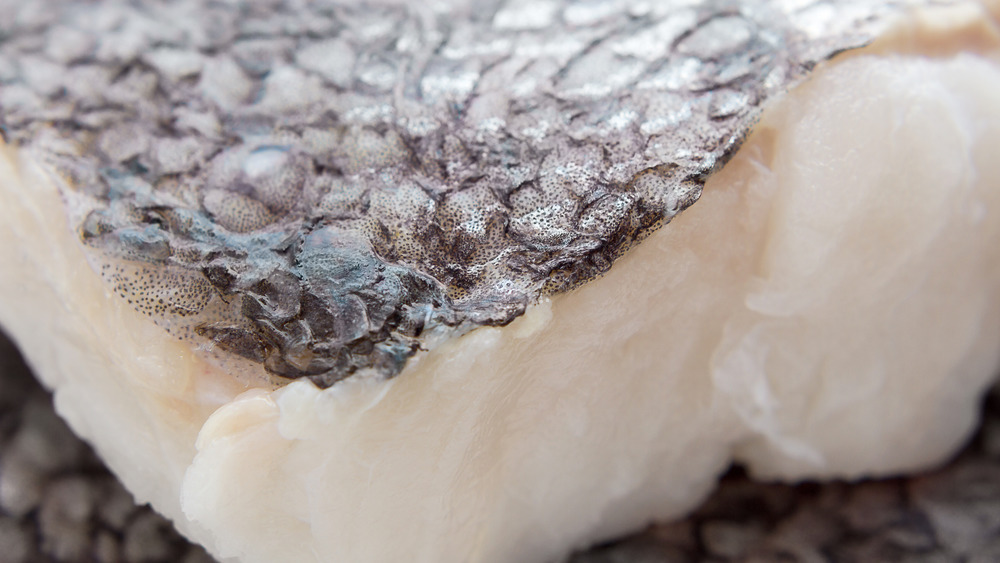The Interesting Way Tilapia Skin Can Be Used
We may receive a commission on purchases made from links.
One of the most common types of fish eaten in the U.S., tilapia is known for its subtle, mild flavor and flaky, white flesh (via MasterClass). Not only is it delicious (and less "fishy" than other types of fish), but it's also full of health benefits. With just 128 calories per 3.5-ounce serving, it packs in a solid 26 grams of bone-building protein and a plethora of nutrients, vitamins, and minerals including niacin, vitamin B12, phosphorus, selenium, and potassium (via Healthline).
While many of us enjoy our tilapia grilled, steamed, baked, or even fried, the uses for the white fish go beyond the dinner table. Back in 2017, doctors in Brazil found a new use for tilapia, specifically tilapia skin. While it's something that you usually scrape off and toss in the trash when you're cooking at home, that skin can serve a very important role in healthcare. Here's what you need to know.
It can help burn victims
According to Scientific American, Brazilian doctors have found that tilapia skin can be used to treat burn wounds. Apparently, Brazil doesn't have access to all of the human skin, pig skin, and other alternatives that are available in the U.S. for bandaging second- and third-degree burns. The three skin banks in the country can only meet about one percent (!!) of Brazil's needs. Thus, doctors were in desperate need of a solution.
Enter tilapia skin. Doctors found that the fish skin contains even more collagen protein — which helps with scarring — than human skin and other types of skin. It also has more tension and moisture, so when it goes on, it stays on. Doctors only have to change the tilapia skin a few times during the course of several weeks of treatment and it even greatly decreases the amount of healing time for the wound. The hope is that this new discovery will lead to tilapia skin being produced and sold on a larger scale so more burn victims can receive the treatment.

